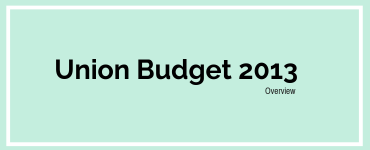In early nineties, my dating with stock market started. When I was studying 12th standard, my physics teacher ( colleague of my dad) said to be making huge money from share market. India Today and my physics teacher were the two chief sources that introduced me the world of quick riches. At that time, my physics teacher borrowed around Rs.50000 from my dad to invest in a stock ( I think That was Vysya Bank) which was rumored to declare a bonus issue. It indeed declared 5 shares for every one share bonus and the stock zoomed to 5 times in 25 days. Not only he returned the money within a month, he also built a superb house with the profit he earned. As I myself witnessed the quick appreciation in one month time, It made me to think only about stocks, stocks and stocks. In the same time, India Today published an article about stock market and how 5 to 6 ordinary men earned huge fortune in a very quick time. This made me to constantly nag my dad to take up investment in shares. As I am hailing from a middle class family, my father was not willing to give me huge amount required to invest in stocks. Those days the shares are traded in paper form with minimum market lot of 100 shares. NSE didn’t exist at that time. No mobile phones. No internet or online trading. Owning a PC at that time was a fortune. No STD facility. Getting information on stocks were very very difficult. There was no cable TV or DTH.
Both my father and my physics teacher warned me about huge risks involved in stock market investment. In Tamil Cinemas, the rich man usually receives a telegram stating that the stock market was crashed. The second day he was shown as a beggar. Though the warnings and cinemas threatened me, I searched for risk- free ways to enter into the market . In those days, IPO prices were controlled by Govt.,. The issuers cannot charge the premium as they wish. Hence IPOs were attractively priced. But getting allotment was like getting prize in a lottery raffle. So I decided to invest in IPOs which had no risk of losing the capital. My first investment was through SBI IPO. Minimum lot size was 50. Each share was offered at Rs.100/shares. My mother and me applied for 100 shares each and got allotment of 50 shares each. We sold it for Rs.290/share after 6months. On the investment of Rs.10000, we got a profit of Rs.18000 within a year after all costs. My second investment was Reliance Petroleum equity cum debenture issue. In this issue also I made more than 100% profit. At that time my investment strategy was to apply all IPOs which received good rating in Capital Market magazine, in the name of all the members of the family and sell them on listing and made huge profit. As I made money in each and every IPO I got allotment, my confidence started to grow. Then I decided to enter in to secondary market.
At that time, getting access to timely information was difficult, I have no other option but relay my broker’s tips (like PM’s son is buying this stock – Gold Star Steel)for stock buying and selling decisions. On an average, I made decent profits without a single loss. But good time never last forever. Then comes huge stock market crash ( I don’t remember the reason. It may be due to any one of the following Harahad Metha or MS Shoes scam or South East Asian countries currency crisis). We bought Arvind Mills (Jeans are gaining huge popularity in India and turning into National dress) at Rs.220 and sold @ rs.90 after one year. All the paper profits turned into small manageable losses. But my broker and my dad advised me against booking losses however may be small. IPO market also crashed. Stocks were started to list discount to issue prices. Now my primary and secondary market investments showed around 35% loss. Previously it was only 5%. My dad didn’t allow me book losses. After all, it was his hard earned money.My dad told me that If they appreciate to previous level, I may book looses. But after 1 month, 50% of our total investment had gone. Now portfolio showed real net loss. Even in that time, I was not allowed to sell. Even today I am having share certificates those useless companies. My dad didn’t allow me to trade any further. I end up with the shares of around 90 companies. One my investments was around 500 shares of Pentasoft which was bought @Rs.75 which was declined to Rs.45. After few years, market witnessed “IT Boom” then followed Kethen induced stock rally. Pentasoft touched Rs.950 and I sold all the Penasoft I hold, and wiped out all the losses I am carried forward so far.
Then I tried to follow swing trading stretgey. Every week I buy shares recommended in the Sunday BusinessLine on Monday and sell it after 3-4 weeks with 20 to 30 % profit. I also followed the market rumors published in the Capital Market Technical Analysis (Fortnightly). It went well for more than 2 years. Then one of my relatives started a sub-brokerage firm. To help him, I opened a trading A/c in his firm. Initial 2 months went well. One day that relative told me that how easily and quickly their clients were making money in the intra day trading. Normally I place my orders online or through phone. First time I visited his office and I saw myself that those without even the basic knowledge about stocks were making Rs.20000-Rs.30000 in cash, F&O trading. It tempted me. I forgot a fact that they were full time traders and I am having full time employment at an University as Senior Lecturer. In the first month itself, I lost Rs.40000 as it seemed a different ball game for me. I didn’t follow the rules I learned in my long stock market journey. I just followed tips. During that time, If I managed a profitable trade for Rs.500, It would be followed by 3-4 losing trade of Rs.1500-Rs.2000 each. I quickly booked my profits and allowed to run the loss with mere hope without a tested trading strategy and stop loss. Then saneness returned. I quit day trading altogether. Then I refined my methodologies.
IPO
- First I read the research reports published by reputed brokerage houses like India Infoline, Nirmal Bang, Share Khan and news papers like Businessline.
- Then I download the prospectus and read both positive and negative factors that would affect the company and management’s discussion on risk factors and justification of premium. Then I would make two or three worst case scenarios (like entire economy fails, monsoon failure, company specific order cancellation, change in customer preference, prolonged gestation period) and evaluate the competency of present management in managing these factors from published information.
- Based on the future earning potential ( EPS growth projected aas10% less than their past 3-5 years growth, P/E ratio of the industry), I try to predict fair value of the company . If it is available at least 30% to it’s my predicted fair value, I would make investment or make purchase in secondary market.
Secondary Market
If anything fetches you a return (in the form of dividend, interest or capital appreciation) over extended period of time ( ie. For more than one year), then that is normally called as investment. Before entering into any stock, I first decide the holding period. I use two different brokers for trading and investment.
Trading
Normally I pick my trading stocks which are volume shockers. I track stocks which has sudden spurt in volume (50% more than last 5days average volume). Use 5days, 10 days and 30 days moving averages to determine the trend and direction of trade. Use trailing stop loss to exit the trade. I always use 10% stop loss for trading.
Investment
Track earning reports, brokerage research reports and magazine and business paper analyst reports. If the theme or sector outlook is appealing (based on current and future earning potential), I evaluate the management, past 3 years balance sheet and cash flow statements after removing any extraordinary items and also perform SWOT analysis for next 3 years. Then I determine the fair value of the share both for current time period and 3 years hence. If it is appealing, I normally add position over a period of 6 to 9 months. Every quarter I re-ealuvate my methodology and company’s performance. For emerging sectors where past earning history was not available, I do invest as they give huge return if clicks, but the exposure would be limited to 15% of my portfolio (at the time of entry). I use expected EPS growth, net profit growth, book value and dividend payment history, change in institutional holding to screen the companies. I also use 200 days and 50 days moving average, and RSI to enter into investment stocks. Normally I won’t use stop loses for investment purchases. I employ trailing stoploss to that particular stock, if it’s SWOT analysis paints a grim picture.
John Christy is a popular blogger dedicated to educating people about managing their finances efficiently. His blog InvestChips.com is an Indian Blog on Personal Finance, wealth creation, tax, savings and web technologies.





Out of the lot I like John Christy's style of investing. Stage by stage he lists things which are very useful and the main point is he shares his experiences in detail and that is very important. Moreover his methods are fantastic.